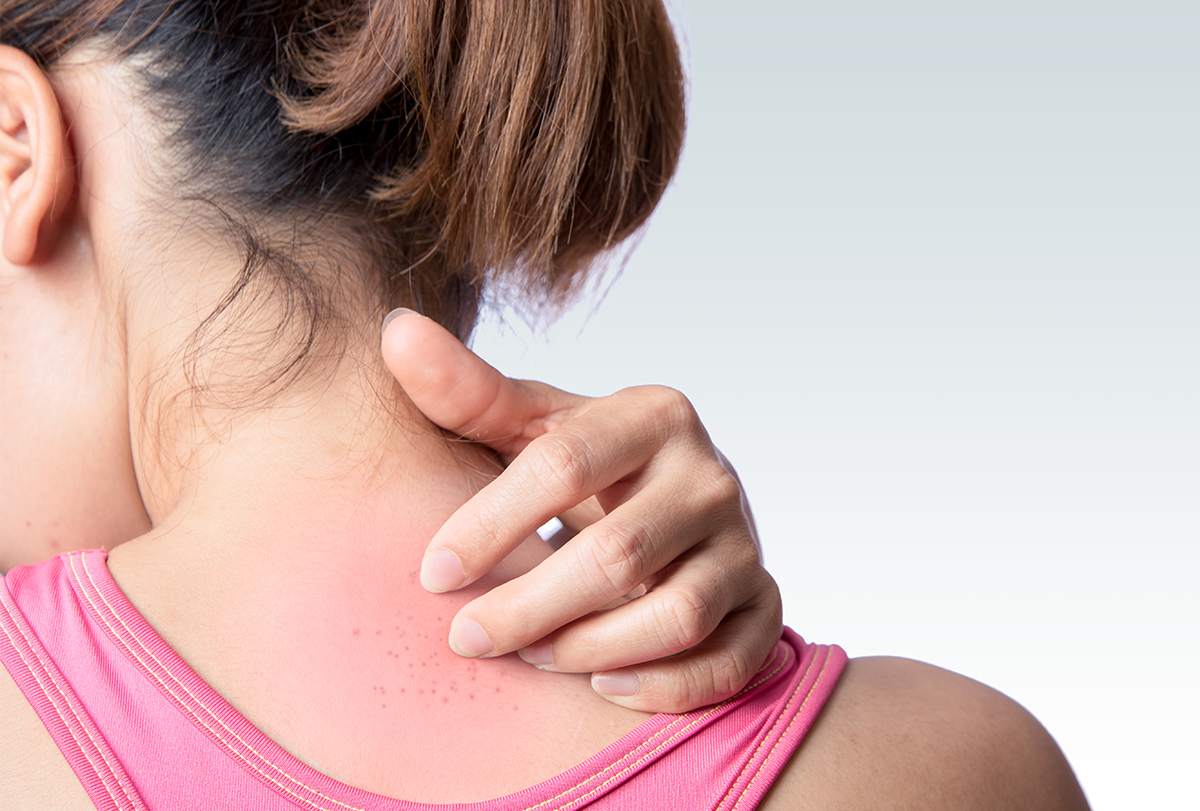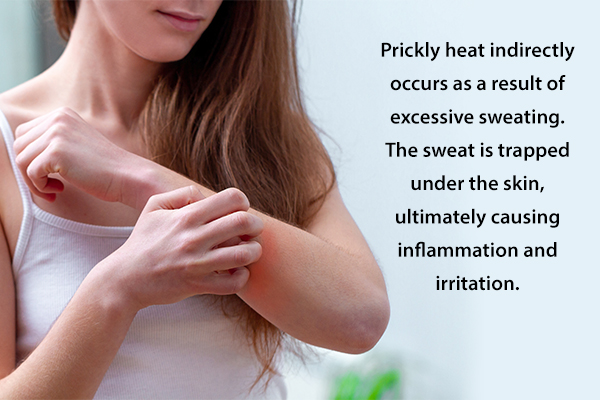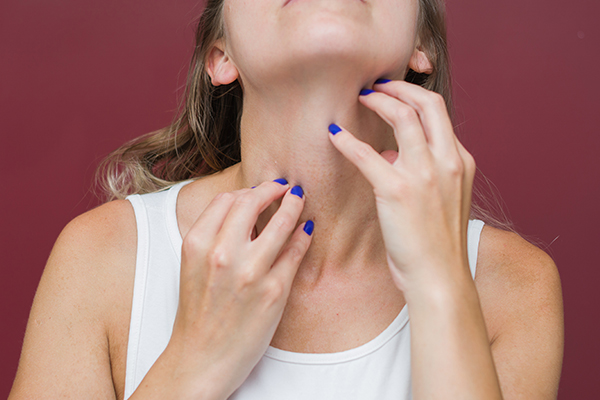In this article:
Prickly heat, medically known as miliaria, refers to a skin condition characterized by the formation of a rash due to the entrapment of sweat under the skin. (1)

Commonly called heat rash, it occurs due to blockage of the sweat ducts, preventing the sweat from reaching the skin surface and evaporating. As a result, the skin becomes inflamed, itchy, or prickly. Small red blisters may also develop on the affected area.
Prickly heat can affect people of any age and gender, but it is most commonly seen in infants. (2)
Types of Prickly Heat
Miliaria can be classified into different types, depending on the blockage of the sweat glands and the symptoms.
The common forms of prickly heat include: (1)
- Clear (miliaria crystallina)
- Red (miliaria rubra)
- White/yellow (miliaria pustulosa)
- Deep (miliaria profunda)
Causes of Prickly Heat

Prickly heat indirectly occurs as a result of excessive sweating. The more you sweat, the higher are the chances of dirt, dead skin cells, and bacteria accumulating in the skin pores, clogging the sweat glands.
The blockage prevents the sweat from reaching the skin surface and evaporating. The sweat is trapped under the skin, ultimately causing inflammation and irritation.
The most common factors that cause excessive sweating include:
- Increased physical activity (1)
- Health conditions such as hyperhidrosis
- Use of heavy creams, lotions, or adhesive bandages and patches (3)
- Prolonged heat exposure. (4) However, people used to living in cold climates may also experience prickly heat on moving to warmer climates.
- High-humidity weather that delays sweat evaporation
Symptoms of Prickly Heat
Prickly heat commonly affects areas with a higher concentration of sweat glands, such as the neck, face, groin area, and under the breasts. It can also develop in skin folds and body parts that are constantly under friction with clothing, such as the stomach, chest, and back.
Prickly heat can manifest various symptoms. The most common ones include:
- Itching
- Irritation
- Red rash on the skin
- Mild inflammation
- Small blisters
Treatment for Prickly Heat

Most heat rashes can be improved with over-the-counter medications and self-care. However, if the symptoms are severe or you have an underlying infection, medical treatment is warranted.
Your doctor may suggest the following topical or oral treatments:
- Corticosteroid lotions: These can help treat the skin rashes when applied 1–2 times a day. Avoid applying hydrocortisone creams under the diapers for babies. (5)(6)
- Calamine lotion: Calamine lotions can be highly efficient in treating heat rashes. (7)
- Antihistamines: Oral antihistamine tablets address symptoms associated with a heat rash, such as inflammation and itching. Commonly suggested antihistamine tablets include hydroxyzine and diphenhydramine. (8)(9)
Diagnosing Prickly Heat
Prickly heat can be diagnosed with a physical exam of skin areas that are prone to sweating, especially after heat exposure. In severe or complicated cases, however, the doctor may order a skin culture or biopsy. (10)
Since prickly heat may be symptomatic of an allergic reaction or infections, the doctor may order tests to rule them out.
When to See a Doctor

Prickly heat is a mild problem, but it is vital to consult your doctor in the following cases:
- Heat rash that doesn’t improve on its own in a few days
- Heat rash that worsens despite proper treatment and care.
- Pain or warmth in the affected area
- Pus oozing from the lesions
- Swollen lymph nodes
- Fever or chills
Final Word
Prickly heat is commonly due to excessive heat exposure. It may cause skin inflammation, itching, and redness. The rash generally improves on its own or with self-care and over-the-counter treatments.
If the rash becomes highly discomforting, you may consult your doctor for treatment. Medical attention is imperative when the symptoms worsen and cause problems such as faintness and confusion.

- Was this article helpful?
- YES, THANKS!NOT REALLY


